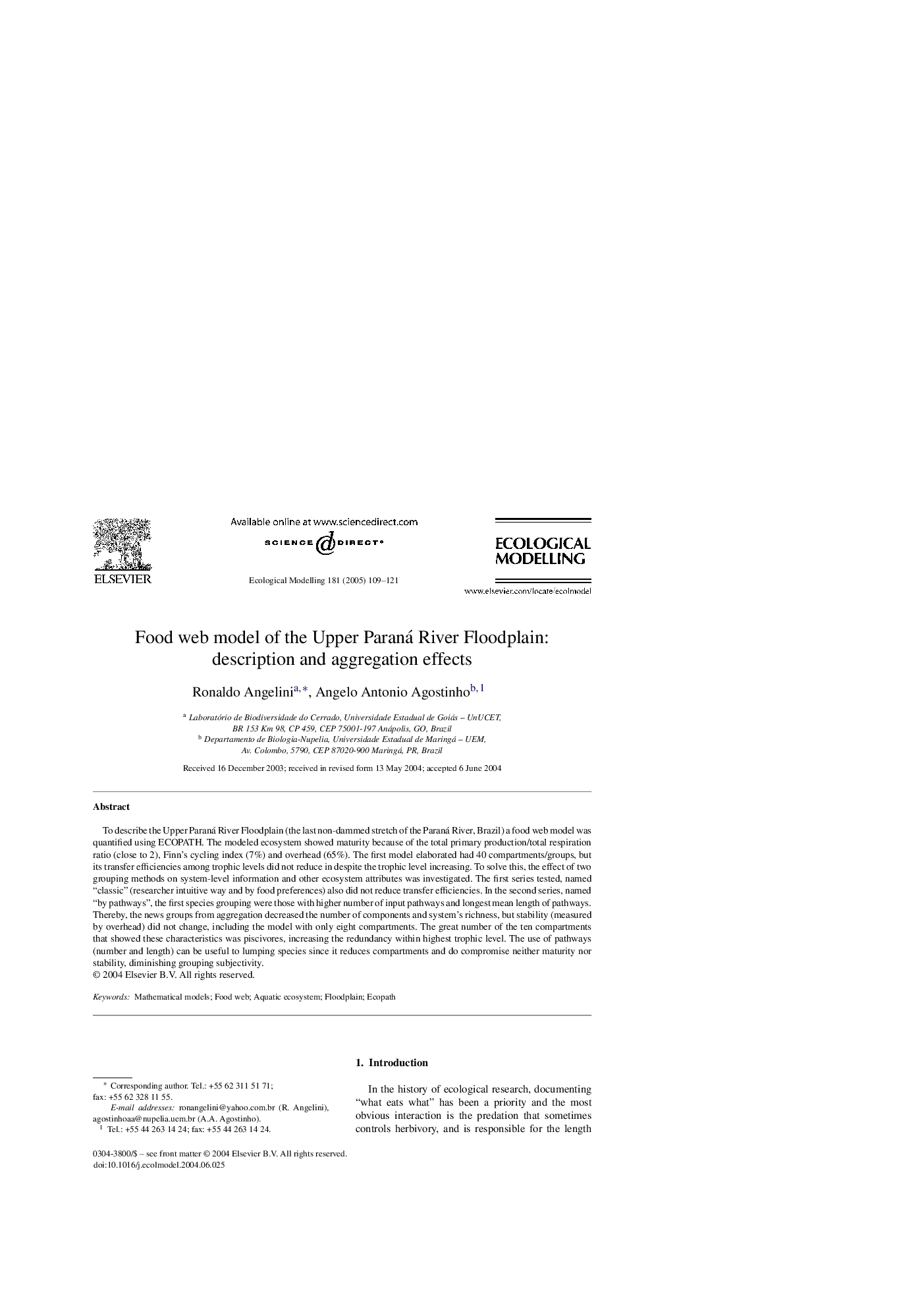| Article ID | Journal | Published Year | Pages | File Type |
|---|---|---|---|---|
| 9443499 | Ecological Modelling | 2005 | 13 Pages |
Abstract
To describe the Upper Paraná River Floodplain (the last non-dammed stretch of the Paraná River, Brazil) a food web model was quantified using ECOPATH. The modeled ecosystem showed maturity because of the total primary production/total respiration ratio (close to 2), Finn's cycling index (7%) and overhead (65%). The first model elaborated had 40 compartments/groups, but its transfer efficiencies among trophic levels did not reduce in despite the trophic level increasing. To solve this, the effect of two grouping methods on system-level information and other ecosystem attributes was investigated. The first series tested, named “classic” (researcher intuitive way and by food preferences) also did not reduce transfer efficiencies. In the second series, named “by pathways”, the first species grouping were those with higher number of input pathways and longest mean length of pathways. Thereby, the news groups from aggregation decreased the number of components and system's richness, but stability (measured by overhead) did not change, including the model with only eight compartments. The great number of the ten compartments that showed these characteristics was piscivores, increasing the redundancy within highest trophic level. The use of pathways (number and length) can be useful to lumping species since it reduces compartments and do compromise neither maturity nor stability, diminishing grouping subjectivity.
Related Topics
Life Sciences
Agricultural and Biological Sciences
Ecology, Evolution, Behavior and Systematics
Authors
Ronaldo Angelini, Angelo Antonio Agostinho,
